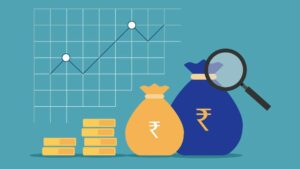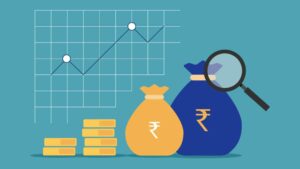One of the cardinal principles of investing is “buy low and sell high”. Nonetheless, one of the greatest challenges to follow such a principle is volatility in the market. You never know when the market is at low and when it is at high. The movement in the prices of the stocks is highly unpredictable, at least for a shorter duration, thereby the NAV (Net Asset Value) of the fund also fluctuates accordingly. So, to cover this and protect their investment and let it grow faster, investors use various investment options. That is investors are looking for the best possible way to protect their investment by investing at the right time and in the right way to earn the best returns.
VIP vs SIP
One of not so popular ways of investing is Value averaging investment plan (VIP). The concept follows the conventional investment philosophy of buying at lows and selling at high or buying lesser at a higher price. In this method, the investor determines his goal that is the final amount that he wants to achieve at the end of any period, and invests accordingly with the market movement. VIP is more a formula-driven approach that forces you to buy higher at lower prices and you may not buy at higher prices at all. This is very much different from SIP (Systematic Investment Plan), one of the most popular, highly publicised, and widely used investment tools by mutual fund investors. The investment method is also known as the rupee cost averaging method. Here the investor makes an investment of a predefined amount every month irrespective of market movement. Therefore, if the market is going down he may be buying more units but may not be deploying a higher amount.
Both these concepts score well in various market conditions and protect the investors from the risk associated with the market volatility. Suppose if an investor wants to invest Rs 24000 every year he will invest it in a year by opting for SIP of Rs 2000/month. Accordingly, if the NAV goes down the investor will receive more units and if NAV goes up then he will receive lesser units. Since the investor is buying every month, he will be buying at dips as well as rises, so he is ultimately averaging his cost over the period.
The concept of VIP works backward, the value of investment changes every month. Here investor decides the final amount of investment that he wants to achieve and accordingly sets goals for every month. So, when NAV goes up, the investor needs to invest less and at lower levels, he must invest more.
Suppose if an investor needs Rs 24,000 after one year and he needs to reach this amount systematically i.e. he will plot his investment over the period. So, he will target the total value of his investment in the 2nd month to be Rs 4000, Rs 10000 in the 5th month, Rs 20,000 in the 10th month, and so on till he has reached Rs 24000 in the 12th month. With this layout, every month he will work on the value of units acquired in the last month and then will invest such a sum which will make the value to the desired goal for that month. So even if the investment is disciplined the value or sum that he will invest will keep on changing according to the movement in the scheme’s NAV. Depending upon the goal and amount of investment you are making, you need to keep extra liquid so that you can reap the benefit of a dip in the market.
Example
To make it more illustrative, we have looked out how VIP (Value investment plan) and SIP work in different market conditions. Let’s assume the investment is done in one of the very popular mid-cap schemes in various market conditions. In the bull market, an investor gets good returns in both cases. In the case of SIP, the investor has invested Rs 2000 every month. So, the total investment he made is Rs 24,000 in a year. In the bull market, the SIP has reaped the return, which we have calculated using XIRR, which is 24%. That means the investor has earned the profit of Rs 2996 in a way of the increased value of an investment. Similarly, while adopting VIP as an investment tool, in the same condition with a goal of reaching Rs24000 by the end of the year the investor invested only Rs. 20357. This has helped the investor earn a profit of Rs 3642, and its XIRR comes at 25%. So, in the bull market with less amount of investment the investor can earn more with the VIP.
Though the VIP reaps more returns, the SIP still stands as a good investment strategy for the investors who don’t want to invest in a lump sum and want to invest steadily in mutual funds. However, investors who are willing to reach the targeted amount and can change the investment amount for the VIP will be a good option.
Advantages of VIP
- As a discipline, it invests more rupee amount when markets are lower and less when markets are higher
- As a discipline, it helps investor overcome emotions
- In most cases of backtesting, it generates higher returns than normal SIP which is based on the rupee cost averaging technique
- It achieves a lower cost of acquisition in most scenarios of backtesting as compared to SIP
- The probability of achieving target value for a portfolio is much higher and hence ideal for financial planning
- Longer the investment horizon, the higher the benefits
The key difference between VIP and SIP
- The investment amount for each period is different
- The investment amount is calculated based on the following formula
- Investment Amount = Target Portfolio Value – Actual Portfolio Value
- Target Portfolio Value is calculated based on the long term average return





















